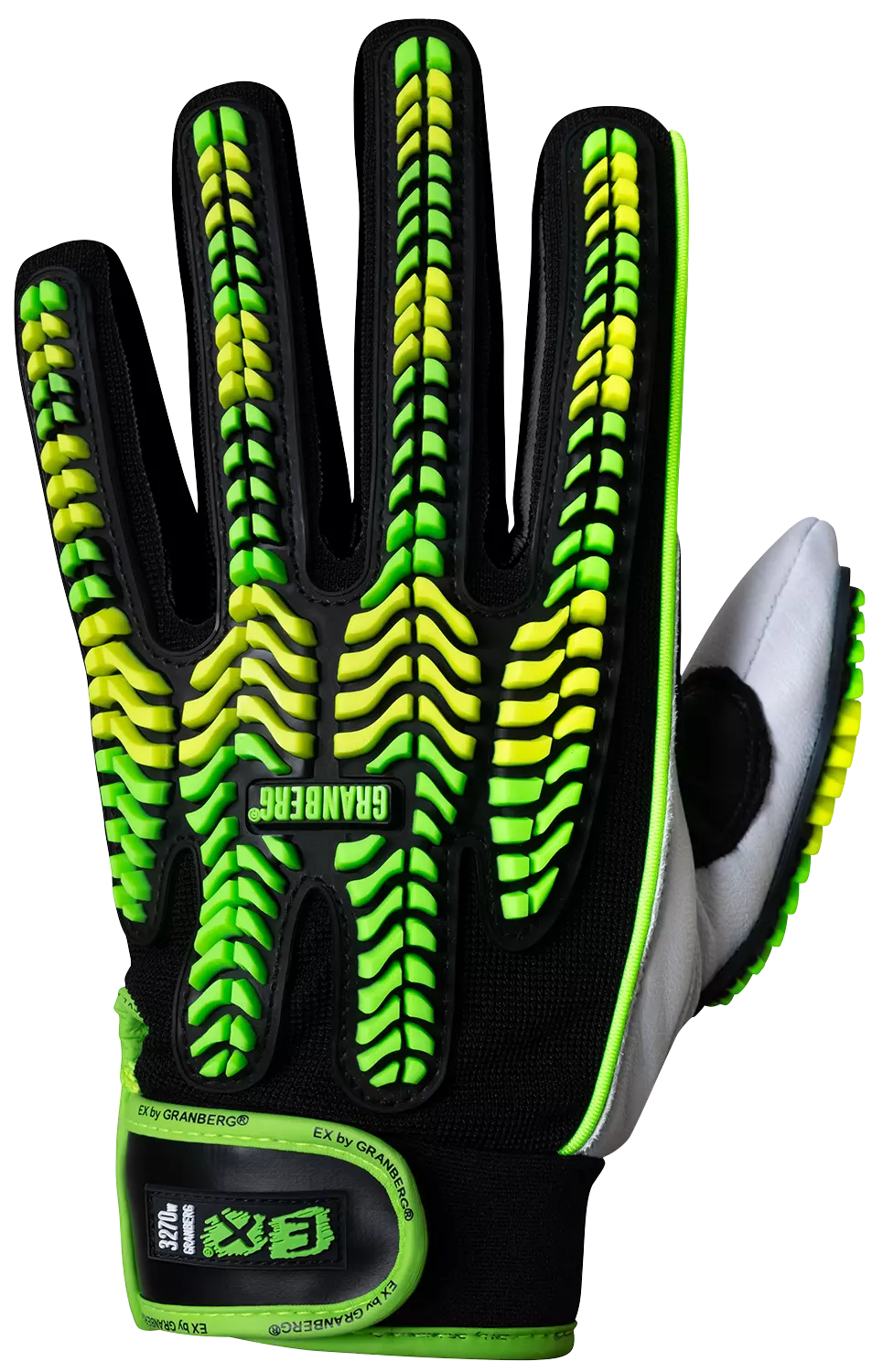
Features You'll Love

Cuff Style · Hook And Loop
Determines how the glove secures around the wrist, affecting fit, comfort, and protection coverage at the wrist area.

EN 388 · Impact Protection P – Passed
This glove has passed an impact protection test for the back of your hand. It is designed to absorb and reduce the force from bumps and hits to your knuckles and hand, providing extra safety during demanding tasks.
Granberg
EX® Cut, Impact, and Water-Resistant Winter Gloves, Black/Green/White, 6 pairs
EX® Cut, Impact, and Water-Resistant Winter Gloves, Black/Green/White, 6 pairs
4.8 / 5
131,30 €
Price per 6 pairs
21,88 € / pair
Choose size
Free delivery
Features You'll Love

Cuff Style · Hook And Loop
Determines how the glove secures around the wrist, affecting fit, comfort, and protection coverage at the wrist area.

EN 388 · Impact Protection P – Passed
This glove has passed an impact protection test for the back of your hand. It is designed to absorb and reduce the force from bumps and hits to your knuckles and hand, providing extra safety during demanding tasks.
Product description
These professional-grade protective gloves combine superior cut resistance with comprehensive cold weather protection, featuring a cut level D rating according to EN 388:2016 standards. The durable goatskin palm construction with ProTex™ waterproof membrane ensures excellent grip and water resistance in challenging conditions. Enhanced with TPR impact protection on the back of the hand and a warm fleece liner, these gloves deliver optimal protection against both mechanical risks and cold weather elements.
Product Features:
- High cut protection in palm and fingers
- TPR impact protection design on back of hand
- Waterproof and breathable ProTex™ membrane
- Full goatskin palm construction
- Warm fleece liner for cold protection
- Spandex back for flexibility and breathability
- Elastic wrist with adjustable hook and loop closure
Technical Details:
- Leather thickness: 0.7-0.9 mm
- Length: 20.5-27.5 cm
- Palm material: 100% Goatskin
- Back material: Polyester/Spandex
- Liner: Polyester with ProTex® membrane
- Cut-resistant liner in palm and fingers
- Full winter lining with ProTex® membrane
Protection Ratings:
- EN 388:2016: Level 2332D
- EN 511:2006: Level 120
- ANSI Cut: A3
- ANSI Impact: Level 2
- CE Category II
Recommended Applications:
- Outdoor work with cut and impact risks
- Cold weather operations
- Wet condition activities
- Applications requiring precise handling